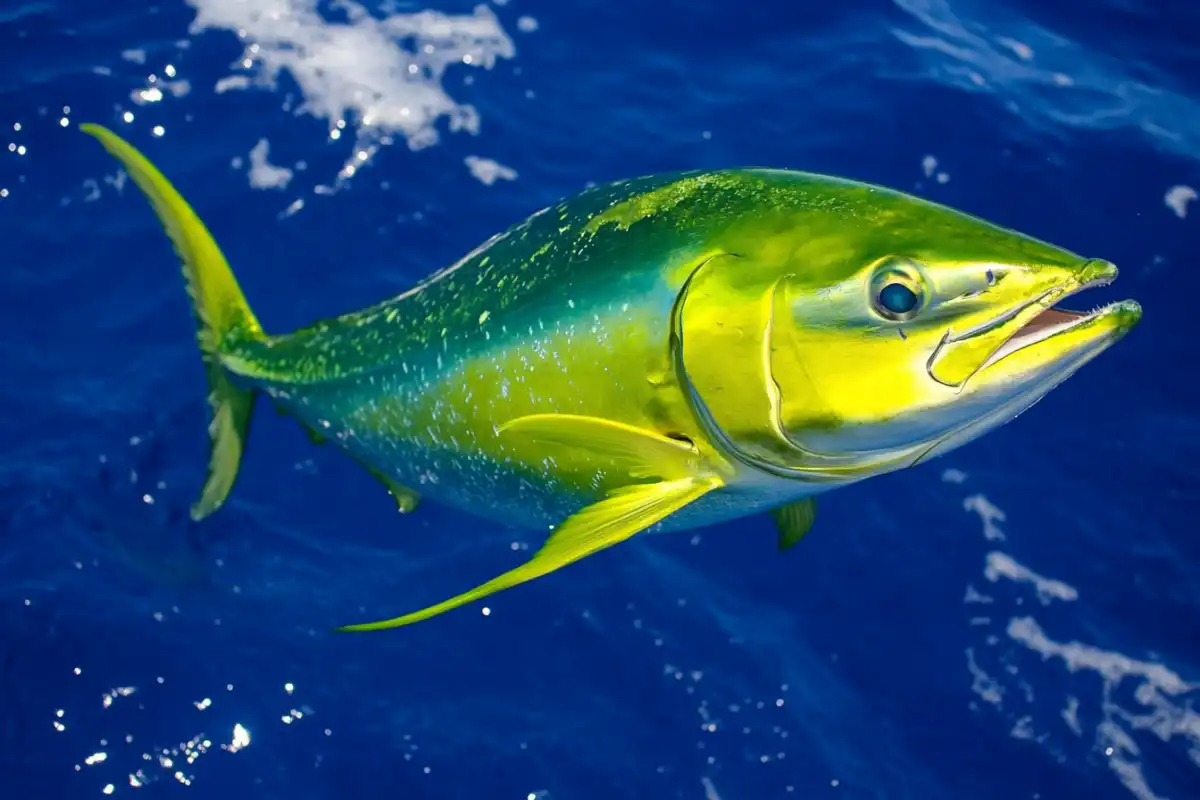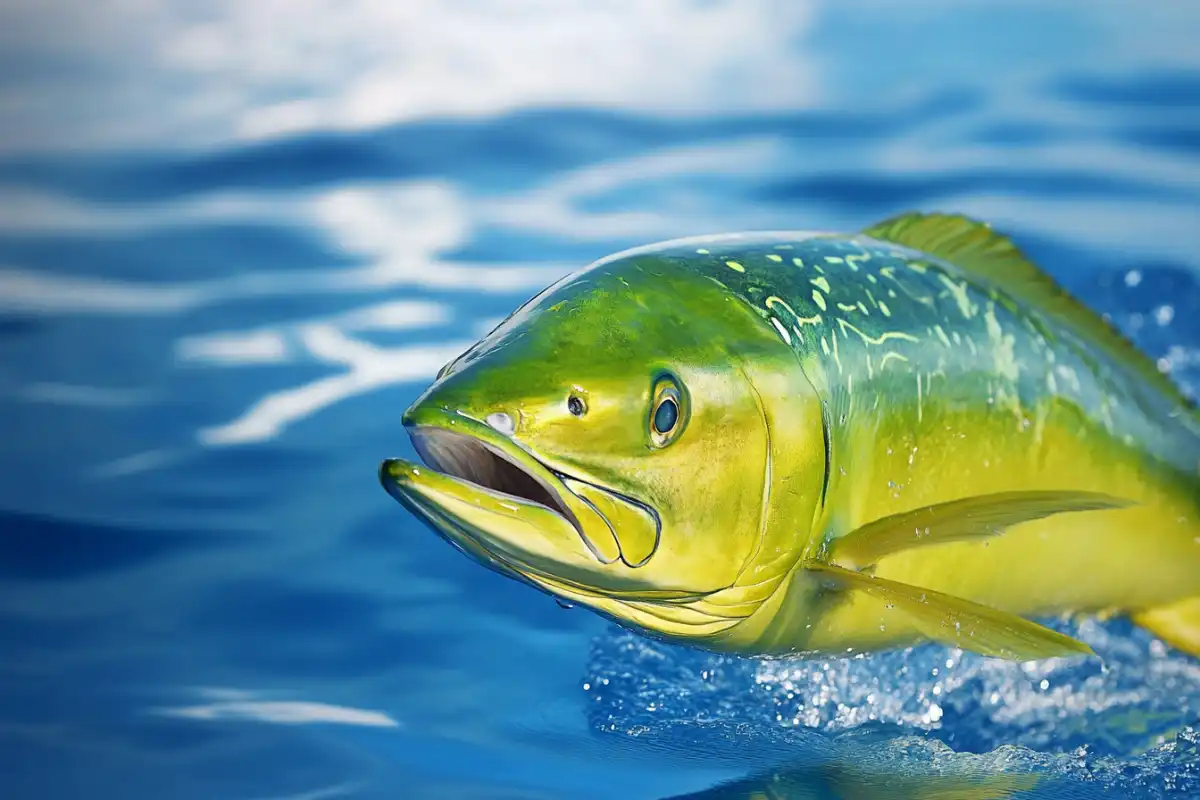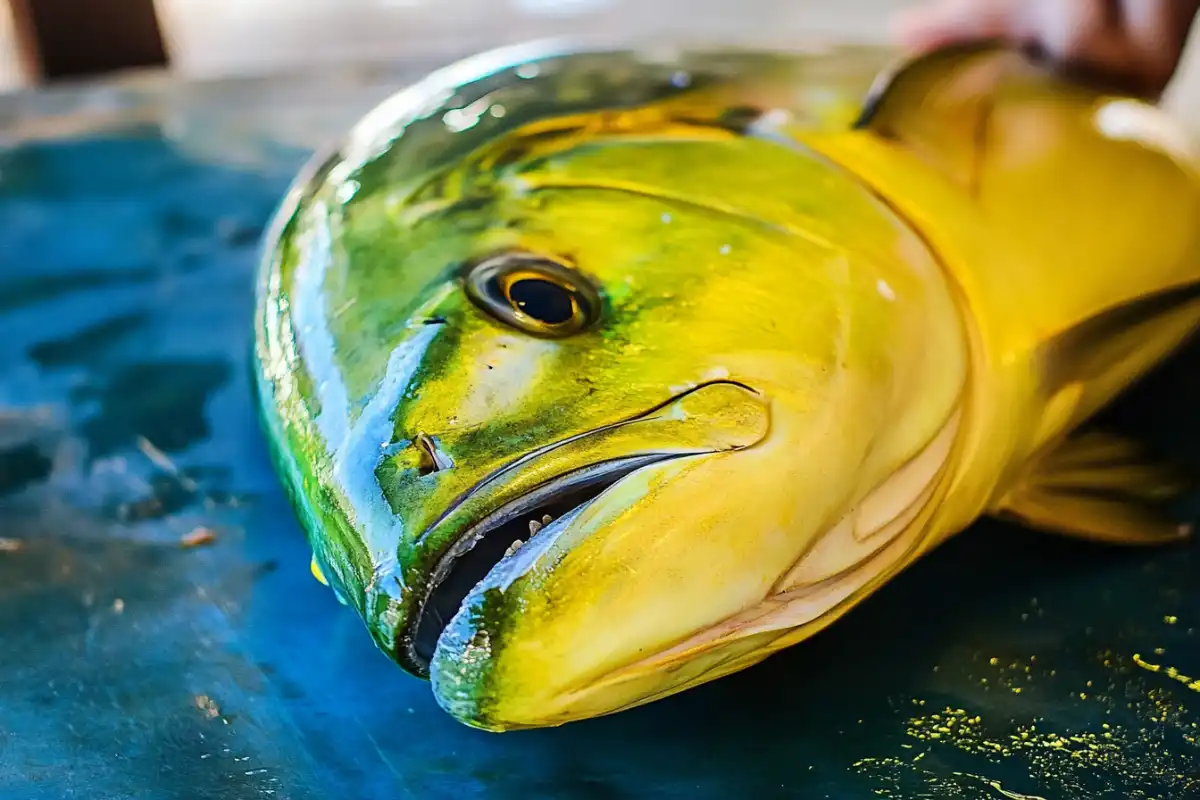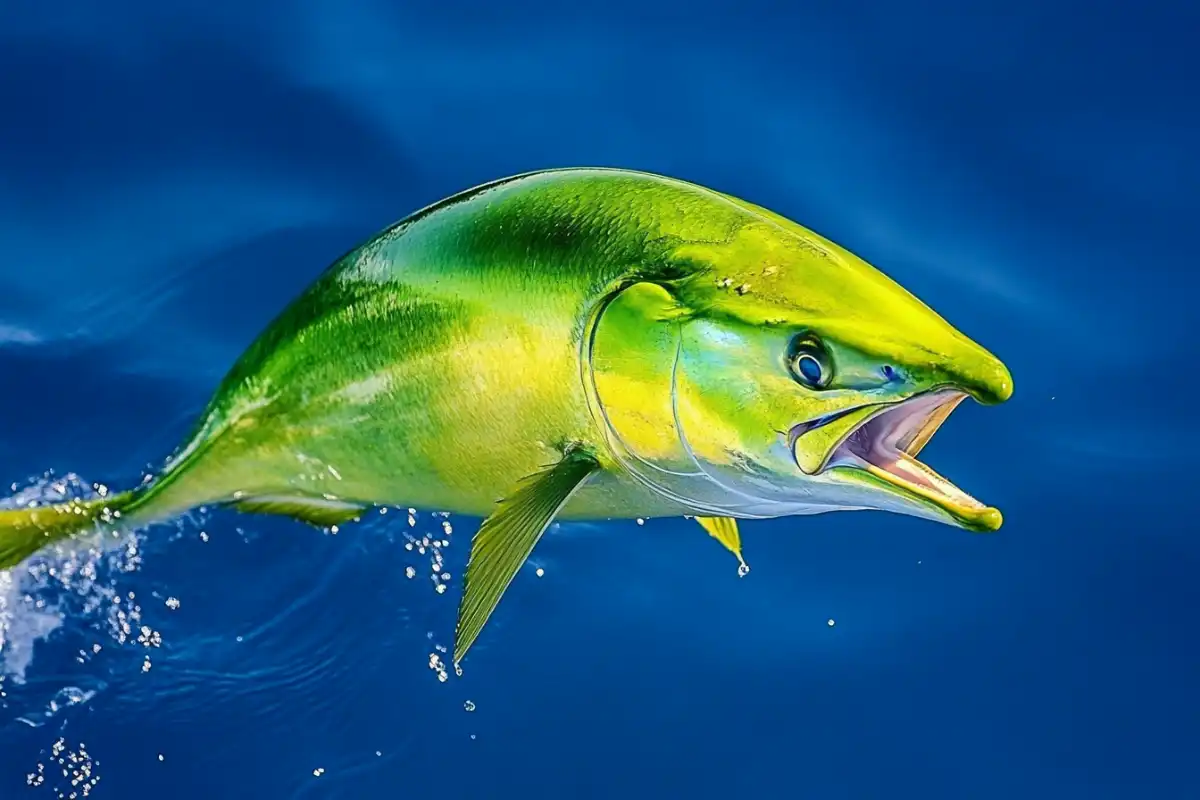Mahi mahi, also known as dolphinfish, is a top choice for seafood lovers worldwide. Its firm texture, delightful taste, and impressive nutritional value make it a favorite for both home cooks and chefs. In this guide, you’ll discover why mahi mahi is an excellent fish to eat by exploring its nutritional profile, sustainability, cooking methods, and its role in global cuisines. By the end, you’ll have a clear understanding of how this tropical fish can contribute to a balanced, healthy diet.
Key Takeaways
- Mahi mahi is a nutrient-rich fish that is high in protein, omega-3 fatty acids, vitamins, and minerals.
- Mahi mahi is considered a sustainable seafood option due to its fast growth rate and responsible fishing practices.
- Its firm texture and mild, sweet flavor make mahi mahi versatile for a variety of cooking methods.
- Mahi mahi is a popular ingredient in many tropical cuisines, including Hawaiian and Caribbean dishes.
- Although generally safe, it’s important to be aware of mercury levels, especially for pregnant women and young children.
What is Mahi Mahi?

Mahi mahi, also known as dolphinfish, is a vibrant and fast-growing fish found in tropical and subtropical waters. It can grow up to 6 feet long and weigh over 80 pounds, making it a large and striking fish to spot in the wild. Its beautiful blue-green and golden hues make mahi mahi a standout among seafood options. Despite its name, mahi mahi is not related to dolphins, which are mammals, but instead belongs to the Coryphaenidae family.
This fish, often referred to as “Dorado” or “Common Dolphinfish,” is widely available in the United States and other parts of the world, particularly in tropical regions where it thrives. Its popularity has surged in recent years due to its firm texture, mild flavor, and sustainable fishing practices.
The Growing Popularity of Mahi Mahi
In recent years, mahi mahi has risen to become a staple on restaurant menus and in home kitchens. Many chefs and food enthusiasts favor this fish not only for its taste but also for its versatility in various dishes. Whether grilled, baked, or seared, mahi mahi retains its delicate flavor while absorbing spices and marinades with ease.
This growing popularity isn’t just a trend—mahi mahi facts back up its appeal. Its combination of health benefits, environmental sustainability, and culinary flexibility has made it a preferred seafood option for people looking to improve their diet without compromising on taste.
“Mahi mahi is a truly unique and delectable fish that has captured the hearts and palates of seafood lovers everywhere.”
Nutritional Benefits of Mahi Mahi
Mahi mahi is a nutritional powerhouse. This fish is low in calories and fat while being packed with essential nutrients. Here’s a breakdown of its key health benefits:
- High-Quality Protein: A 3.5-ounce serving of mahi mahi provides about 20 grams of protein. Protein is crucial for building and repairing tissues, maintaining muscle mass, and supporting a healthy metabolism.
- Omega-3 Fatty Acids: Mahi mahi contains omega-3 fatty acids, which are known for their heart-health benefits. These healthy fats reduce inflammation, lower blood pressure, and may even improve brain function.
- Vitamins and Minerals: This fish is also an excellent source of vitamins and minerals:
- Selenium: Known for its antioxidant properties, selenium helps protect the body from oxidative damage and supports immune system function.
- Vitamin B12: Essential for red blood cell formation and neurological function, vitamin B12 is abundant in mahi mahi.
- Phosphorus: This mineral is crucial for bone health, as well as proper kidney and liver function.
- Niacin (Vitamin B3): Niacin plays a role in converting food into energy and supports skin health and the nervous system.
How Mahi Mahi Contributes to a Healthy Diet
Due to its low-calorie count and high nutrient density, mahi mahi fits well into various dietary plans, including low-carb, keto, and paleo diets. It’s a lean source of protein, which can help with weight management while ensuring that you’re consuming the essential nutrients your body needs to thrive.
Sustainability of Mahi Mahi Fishing
As consumers become more aware of the environmental impact of their food choices, sustainability has become a critical factor in seafood selection. Fortunately, mahi mahi stands out as a sustainable choice.
Why Mahi Mahi is Considered Sustainable
Mahi mahi’s sustainability comes from its fast growth rate and its ability to reproduce in large numbers. Unlike slower-growing fish such as swordfish or tuna, mahi mahi can replenish its populations quickly, making it less vulnerable to overfishing.
Responsible Fishing Practices
Most mahi mahi is caught using eco-friendly fishing methods such as troll fishing and hook-and-line techniques. These practices are selective, meaning they reduce the likelihood of bycatch—accidentally catching non-target species like sea turtles or sharks. Furthermore, fisheries that harvest mahi mahi are often well-managed, with limits set on how much fish can be caught each season to prevent overfishing.
“Mahi mahi is one of the most sustainable seafood options available, thanks to eco-friendly fishing methods and conservation efforts by responsible fisheries.”
Cooking Techniques for Mahi Mahi
Mahi mahi’s firm texture and mild flavor make it an excellent candidate for a variety of cooking techniques. Here are some popular methods that bring out the best in this versatile fish:
Grilling Mahi Mahi
Grilling is one of the most popular ways to cook mahi mahi. Its firm texture holds up well on the grill, preventing it from falling apart. To get started, brush the fish with olive oil and season it with salt, pepper, and your favorite herbs. Grill the fish over medium-high heat, turning it once until the internal temperature reaches 145°F (63°C). The result is a smoky, delicious fillet with a slightly crispy exterior and a moist, tender interior.
Baking Mahi Mahi
For those who prefer a hands-off approach, baking is an excellent option. Preheat your oven to 400°F (200°C) and line a baking sheet with parchment paper. Season the fish with your favorite spices, drizzle it with olive oil, and bake for 15-20 minutes until the flesh flakes easily with a fork. Baking mahi mahi allows you to infuse it with different flavors, such as garlic, lemon, or herbs, while keeping the preparation simple and easy.
Searing Mahi Mahi
Searing mahi mahi in a hot pan creates a golden, crispy crust while preserving the tender, flaky texture of the fish. Start by heating oil or butter in a skillet over medium-high heat. Place the fish in the pan and cook for 3-4 minutes on each side, depending on the thickness of the fillet. For added flavor, you can deglaze the pan with white wine or lemon juice and serve the fish with a sauce or fresh salsa.
Mahi Mahi Dishes and Recipes
Mahi mahi’s versatility makes it suitable for various dishes, from light, refreshing ceviche to hearty tacos. Its mild flavor and firm texture allow it to pair well with both bold and subtle ingredients. Here are some ideas for incorporating mahi mahi into your meals:
- Mahi Mahi Tacos: Grill or pan-sear mahi mahi fillets and serve them in soft tortillas with a fresh mango salsa, shredded cabbage, and a drizzle of lime crema.
- Ceviche: For a refreshing appetizer, marinate raw mahi mahi in lime juice with diced onions, tomatoes, cilantro, and jalapenos. Serve with tortilla chips for a bright and zesty bite.
- Baked Mahi Mahi with Herb Crust: Coat the fish in a mixture of panko breadcrumbs, Parmesan cheese, and fresh herbs, then bake until golden and crispy. Serve with roasted vegetables for a well-rounded meal.
“Mahi mahi is a fish that can be prepared in so many delicious ways. Its versatility makes it a great choice for a wide variety of recipes.”
Mahi Mahi Flavor and Texture
One of the reasons mahi mahi is so popular is its flavor and texture. Unlike oilier fish such as mackerel or sardines, mahi mahi has a delicate, slightly sweet flavor that is not overwhelmingly “fishy.” This makes it an excellent choice for people who prefer milder seafood.
Comparing Mahi Mahi to Other Fish
In terms of texture, mahi mahi is similar to swordfish or tuna, offering a firm, meaty bite. However, it’s flakier than those options, making it ideal for grilling, baking, or pan-searing. Its mild taste allows it to pair well with a variety of seasonings, from spicy rubs to tangy citrus sauces.
Health Risks and Considerations with Mahi Mahi

While mahi mahi is generally considered safe and healthy, there are a few health considerations to keep in mind. Like many fish, mahi mahi can contain trace amounts of mercury, especially in larger, older fish. However, the mercury levels in mahi mahi are significantly lower than in species like swordfish, shark, or king mackerel.
Mercury Levels in Mahi Mahi
The FDA states that mahi mahi typically contains around 0.3 parts per million of mercury. This is well below the 1.0 parts per million considered harmful. Nevertheless, pregnant women, young children, and people with certain health conditions should limit their intake to avoid potential risks.
For most people, mahi mahi can be safely enjoyed as part of a balanced diet. However, it’s important to monitor your consumption if you fall into one of the more sensitive groups.
“Mahi mahi is a great source of lean protein and essential nutrients, but it’s important to be mindful of mercury content, especially for vulnerable populations.”
Where to Buy Fresh Mahi Mahi
Finding fresh mahi mahi is easier than ever. Whether you prefer shopping at your local grocery store, seafood market, or online, there are many options available. Here’s where you can typically find fresh or frozen mahi mahi:
- Grocery Stores: Most large grocery chains carry mahi mahi fillets, often in the fresh seafood section. If you don’t see it, ask the seafood counter staff as they may be able to order it for you.
- Seafood Markets: Specialty seafood markets offer a wider variety of fresh fish, including mahi mahi. These markets often source their fish directly from responsible fisheries, ensuring higher quality and sustainability.
- Online Retailers: Several e-commerce platforms specialize in delivering fresh or frozen seafood right to your door. Companies like Vital Choice and Wild Alaskan Company offer mahi mahi, along with other sustainably sourced seafood options.
“Mahi mahi’s availability and versatility make it a popular choice for home cooks and chefs alike.”
Mahi Mahi in Global Cuisines
Mahi mahi is beloved in many cultures, especially in tropical and coastal regions. Its vibrant colors and firm texture make it a favorite ingredient in various dishes, from poke bowls to grilled fillets.
Mahi Mahi in Hawaiian Cuisine
In Hawaii, mahi mahi is a star ingredient in several traditional dishes. You’ll often find it in poke, a dish made from diced raw fish seasoned with soy sauce, sesame oil, and other local flavors. Mahi mahi is also a key component in loco moco, a Hawaiian comfort food dish that combines rice, a hamburger patty, and gravy with fish instead of beef.
“Mahi mahi is a true star in Hawaiian cuisine, showcasing the vibrant, fresh flavors of the islands.”
Caribbean and Mediterranean Influence
In the Caribbean, mahi mahi is often used in ceviche, grilled over open flames, or served with tropical fruit salsas. Its mild flavor pairs perfectly with the bold and spicy seasonings typical of Caribbean cuisine. Meanwhile, in the Mediterranean, mahi mahi is frequently grilled and served with olive oil, lemon, and fresh herbs, embodying the region’s simple yet flavorful approach to cooking.
Conclusion
Mahi mahi is an outstanding seafood choice for its flavor, health benefits, and sustainability. Its firm texture and mild, slightly sweet taste make it a versatile ingredient in many dishes, while its high protein, vitamin, and omega-3 content support overall health. Whether you’re grilling, baking, or trying new recipes, mahi mahi is a delicious and eco-friendly option that fits well into a balanced diet.
In summary, mahi mahi is not only a flavorful and nutritious seafood option, but it also supports sustainable fishing practices that help protect the ocean.
With its growing popularity, impressive nutritional profile, and versatility in the kitchen, mahi mahi truly stands out as one of the best fish to eat. Whether you’re a seasoned seafood lover or new to fish, mahi mahi offers something for everyone.

